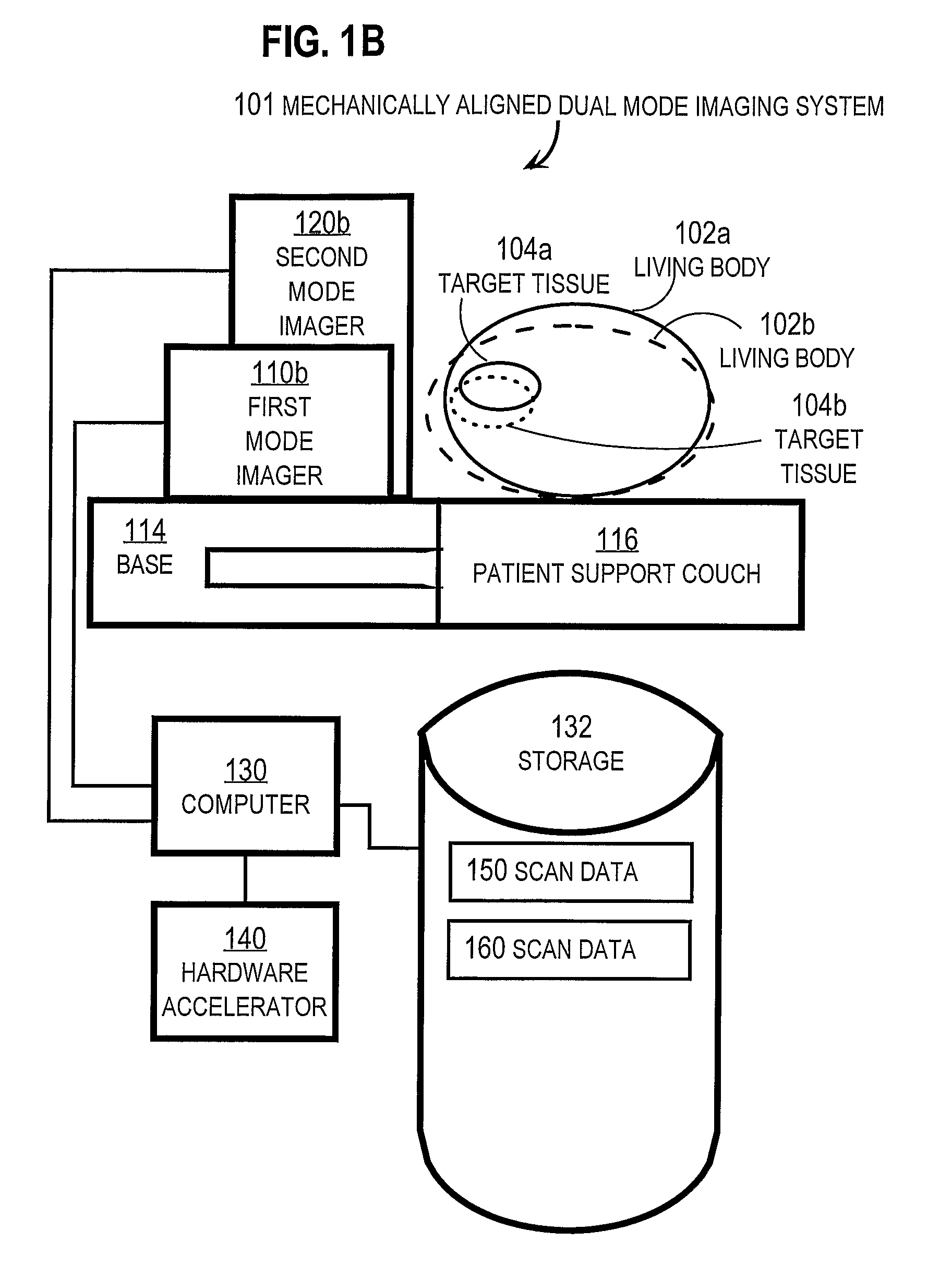Techniques for 3-D Elastic Spatial Registration of Multiple Modes of Measuring a Body
a technology of elastic spatial registration and multiple modes, applied in the direction of instruments, static indicating devices, nuclear engineering, etc., can solve the problem that sub-volumes cannot be used reliably in some circumstances
- Summary
- Abstract
- Description
- Claims
- Application Information
AI Technical Summary
Benefits of technology
Problems solved by technology
Method used
Image
Examples
Embodiment Construction
[0031]Techniques for adaptive registration of sub-volumes are described. In these descriptions, for the purposes of explanation, numerous specific details are set forth in order to provide a thorough understanding of the present invention. It will be apparent, however, to one skilled in the art that the present invention may be practiced without these specific details. In other instances, well-known structures and devices are shown in block diagram form in order to avoid unnecessarily obscuring the present invention.
[0032]Some embodiments of the invention are descried below in the context of spatially 3D CT and PET scans with sub-volumes using mutual information as a similarity measure. However, the invention is not limited to this context. In other embodiments, two or more 2D, temporally varying 2D, 4D and higher dimensional scans based on the same or different sensing systems of the human body or other living and non-living bodies are registered elastically on a coarse scale, or e...
PUM
 Login to View More
Login to View More Abstract
Description
Claims
Application Information
 Login to View More
Login to View More - R&D
- Intellectual Property
- Life Sciences
- Materials
- Tech Scout
- Unparalleled Data Quality
- Higher Quality Content
- 60% Fewer Hallucinations
Browse by: Latest US Patents, China's latest patents, Technical Efficacy Thesaurus, Application Domain, Technology Topic, Popular Technical Reports.
© 2025 PatSnap. All rights reserved.Legal|Privacy policy|Modern Slavery Act Transparency Statement|Sitemap|About US| Contact US: help@patsnap.com



